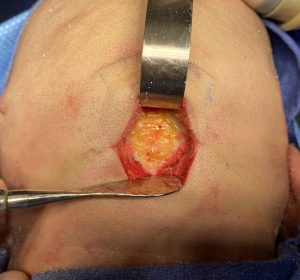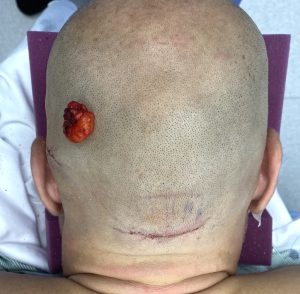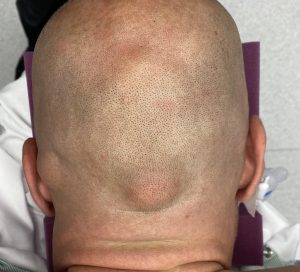Background: The most recognizable skull deformity on the back of the head is the occipital knob or the overgrown inion which is seen most commonly in men. It appears as a solitary midline projection sticking out of the lower end of the occipital bone. It presents in variable sizes from a small bump to a large protrusion. Why the inion develops a larger size to make it more visible is not known.
The occipital knob can always be completely removed due to the thickness of the skull in this area. Due to the attachments of the neck muscles on the lower end of the visible occiput the bone naturally gets thicker. And most inions have a thickening on the inside of the occipital bone opposite the knob, further increasing the bone thickness over other skull areas. As a result occipital knob removal is both effective and safe.
Many patients that present for occipital knob removal are males with shaved heads. This is not surprise since any lump or bump on such a head is very visible. While the inion is the most common hard tissue solitary bump on the head, the most common soft tissue isolated bump is that of a lipoma. Can a bony knob and a lipoma occur in the same shaved head patient….statistically possible but I have never seen it until now.





Key Points:
1) Large occipital knob can be completely reduced through a nearby scalp skin crease.
2) Complete occipital knob reduction may enter the diploic space of the prominence.
3) The most common soft tissue mass of the scalp is a lipoma which in this case produced a circular soft tissue mass over the mastoid bone behind the ears.
Dr. Barry Eppley
World-Renowned Plastic Surgeon








